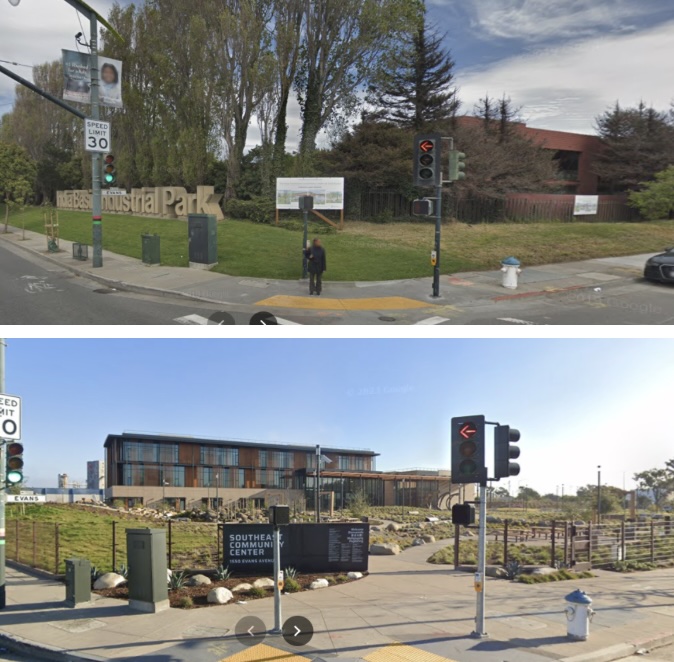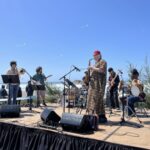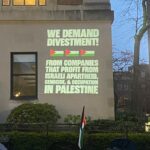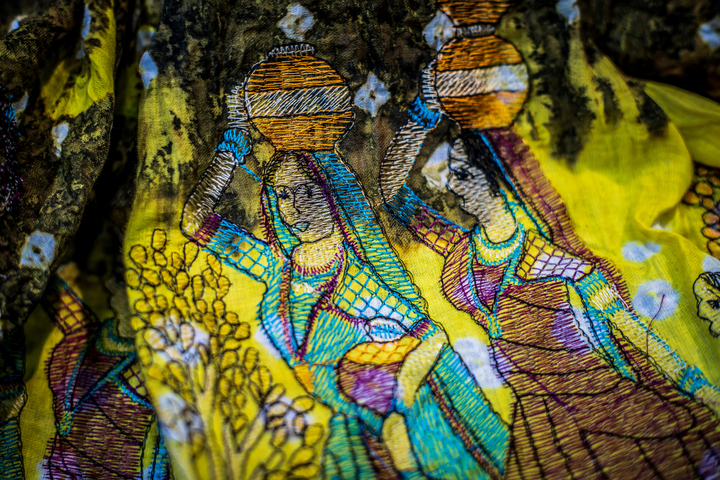Since its inception, the Bayview-Hunters Point community has been a vital part of the BIPOC community in San Francisco, but recent land and building renovations made by the city and nonprofits in the last decade have sparked a critical question: at what point is development revival or removal of a community?
The Bayview-Hunters Point community grew in the 19th century as a ship-building hub and a center for the Chinese fishing community. During World War II, the U.S. Navy took over the area, attracting African American workers.
It became the loading site for the “Little Man” atomic bomb used on Hiroshima and housed the Naval Radiological Defense Laboratory. As a result, the environment suffered radioactive contamination, leading to environmental issues that persist to this day and that impact the health of the residents.
By the 1960s the neighborhood had become predominantly African American and a focal point for the racial tensions of the era, such as the Hunters Point Uprising, a five-day riot in 1966 sparked by the police shooting and death of 17-year-old Matthew Johnson that resulted in 2 dead, over 50 injured and a state of martial law.
Due to environmental hazards, geographic location and political marginalization, Bayview-Hunters Point became increasingly socially isolated from the rest of San Francisco, a dynamic that has only recently begun to shift.
Gentrification is a process where wealthier residents move into a historically low-income area, resulting in the displacement of earlier residents. Professor of Housing Policy and City Planning at MIT Phillip L. Clay states that there are four stages of gentrification: “1. Pioneers, a small group of risk oblivious pioneers…2. Risk Takers, flippers and remodelers…3. Displacement, property values start rising, due to changes in the neighborhood… and 4. Mature gentrification, neighborhood becomes desirable.”
On November 6, 2024, the Indian Basin Waterfront Park at 900 Innes Ave opened to the public, with funds for the project coming from the nonprofit Trust for Public Land and private donations. Though it is still in development, its $200 million price point is only an addition to the significant sum spent in developing the Bayview-Hunters Point area this last decade.
Over the last five years, investments in Bayview-Hunters Point include the $100-139 million Southeast Community Center, the $39.4 million Southeast Family Health Center and the $6 million renovation of K.C Jones, along with $8.63 million in SFMTA transportation improvement.

According to the San Francisco Planning Housing Development Pipeline Report 2024 Q3, 11,212 housing units are to be built in this area in the next 5 years, only 25% will be affordable. According to a 2010 report by the San Francisco Office of Community Investment and Infrastructure, the entire redevelopment of the Hunters Point Shipyard is estimated to exceed $1 billion. The majority of funding for these projects come from city resources, non profit resources and private donations.
When a neighborhood undergoes rapid developments, improvements and lower land costs often attract real estate developers who purchase properties to build new luxury or modern buildings.
These developments typically appeal to middle-class residents or recent college graduates with moderate incomes, gradually altering the demographic makeup in the area. As the middle-class population grows, disposable income rises which can attract more businesses and drive up prices. The increase in average income results in higher property tax revenue, prompting further city investments, which in turn perpetuate the cycle of gentrification.
Dr. Ingrid Gould Ellen, Professor of Urban Policy and Planning at New York University, believes that the start of gentrification is often misunderstood. “Developers know that those neighborhoods are going to see increasing rents and prices. It’s not because their development causes gentrification. Developers are following neighborhood trajectories,” she said.

During development, housing for renters faces significant risk. Landlords may raise rents to match growing demand. In more extreme cases, landlords may enact a practice called “Soft Eviction,” where they pressure tenants to leave by neglecting maintenance requests or ignoring issues that jeopardize the health and safety of renters, effectively forcing them out without formal eviction proceedings.
Although San Francisco has rent control laws, many tenants are unaware of what these laws entail or their rights under them. In such cases, simply having rent control policies is insufficient.
Tyler Kyser is the Associate Director of Organizing Culture and Development at Causa Justa Just Cause, an organization in San Francisco and Oakland empowering BIPOC communities with a focus on housing. “Rent control absolutely works, as long as tenants are very clear on what rent control is and means,” Kyser said.
The Bayview-Hunters Point community has historically been a predominantly Black neighborhood. According to U.S. Census data, 77% of the population in 1980 was Black. However, by 2023, this figure had dropped significantly to just 10.6%, a 66.4% decline. Though the Bayview-Hunters Point community remains a majority BIPOC community today, the significant and rapid decline of its Black population, coupled with ongoing developments, raises questions about how long this cultural identity will endure. “It’s not just protecting those low-income households that happen to live in the neighborhood now, but it’s making sure that doors of that neighborhood stay open to future generations, a diverse set of future generations,” Ellen said.
Ellen suggests that an important solution is community input. For developments to align with the needs and priorities of longtime residents, rather than primarily serving newcomers, it is essential to prioritize the voices and needs of long-term residents. “One of the things I think it’s most important to do is to be sensitive to the preservation of cultural landmarks in a neighborhood and to have engaged community groups that are tied to the neighborhood,” Ellen said. A neighborhood can be much more than a place to live; it can also be a place of safety and connection. Ellen also suggests prioritizing both growth and community, helping preserve the local identity. “You want people to feel like this is their neighborhood, and that this is their community.”




